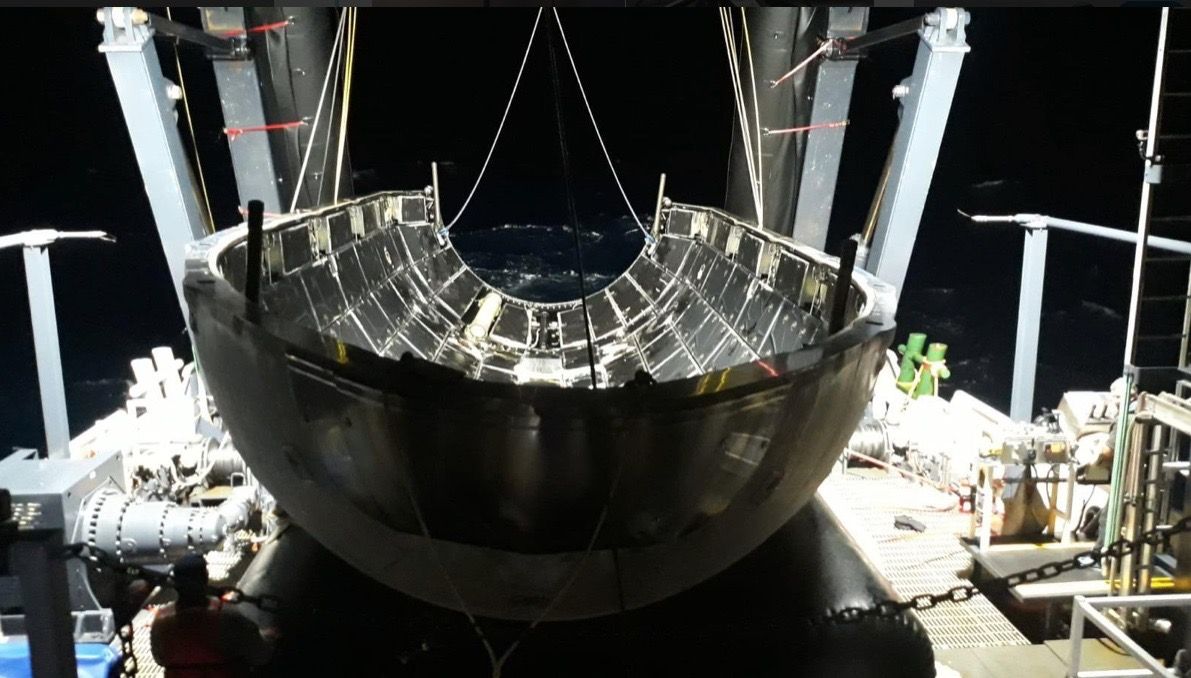
SpaceX plans to check off another reusable-rocket milestone soon.
The company, which routinely lands and re-flies first-stage boosters, recovered the payload fairing during yesterday's Falcon Heavy megarocket launch and plans to employ it on another mission in 2019, SpaceX founder and CEO Elon Musk said.
"Both fairing halves recovered. Will be flown on Starlink mission later this year," Musk said via Twitter yesterday (April 11), where he posted photos of the space hardware.
Related: Reusable Rocket Launch Systems: How They Work (Infographic)
Both fairing halves recovered. Will be flown on Starlink 💫 mission later this year. pic.twitter.com/ouz1aqW3MmApril 12, 2019
Payload fairings are the nose cones that surround and protect satellites during launch. SpaceX has yet to re-fly any fairings, but doing so has always been part of the plan. The company outfits each fairing half with an avionics system and thrusters, which it uses to steer itself to a soft, parachute-aided ocean splashdown.
SpaceX has gone to such trouble because fairings are expensive and therefore worth reusing. Each one costs $6 million, Musk has said — about 10% of the cost of a launch of one of SpaceX's workhorse Falcon 9 rockets. (The two-stage Falcon 9 and Falcon Heavy use the same payload fairing. The Heavy is basically three modified Falcon 9 first stages strapped together; the central booster is topped with a single-engine second stage and the payload.)
Yesterday's recovered payload fairing will be reassigned to a launch for Starlink, Musk added. That program is SpaceX's huge internet-satellite constellation, which will ultimately consist of thousands of spacecraft. The first operational Starlink launch is planned for next month; it will lift off atop a Falcon 9 from Vandenberg Air Force Base in California.
It's unclear if the recovered fairing will top that Falcon 9; Musk didn't specify which Starlink mission the hardware will fly on.
SpaceX has tried multiple times to catch falling fairing halves using a net-equipped boat named Mr. Steven. Musk has said that approach was motivated by the desire to keep the fairings out of seawater's corrosive clutches, but none of these attempts to date have been successful.
SpaceX did not employ Mr. Steven during yesterday's launch; recovery boats simply fished the fairing halves out of the water. So, it would seem that Musk does not view corrosion and contamination as a serious issue anymore.
Yesterday's launch, which lofted the 13,200-lb. (6,000 kilograms) Arabsat-6A communications satellite to orbit, was the first commercial mission for Falcon Heavy and the rocket's second flight overall. A Heavy first flew in February 2018, on a test mission that launched Musk's red Tesla Roadster, "driven" by a spacesuit-clad dummy named Starman, into orbit around the sun.
Mike Wall's book about the search for alien life, "Out There" (Grand Central Publishing, 2018; illustrated by Karl Tate), is out now. Follow him on Twitter @michaeldwall. Follow us on Twitter @Spacedotcom or Facebook.
https://www.space.com/spacex-reuse-payload-fairing-starlink-launch.htmlBagikan Berita Ini














0 Response to "SpaceX Recovered Falcon Heavy Nose Cone, Plans to Re-fly it This Year (Photos) - Space.com"
Post a Comment